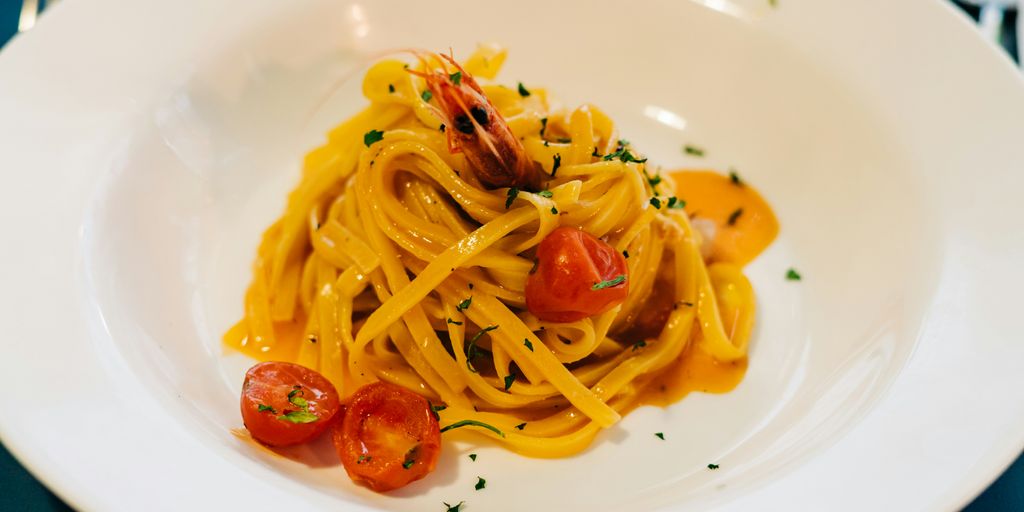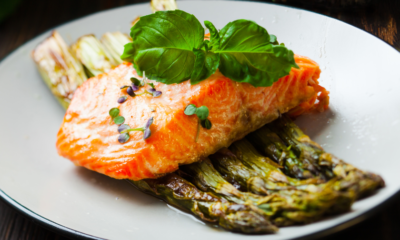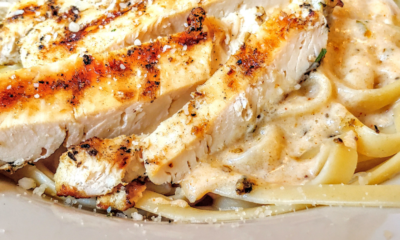Food
How to Make Authentic Italian Pasta: A Food Lover’s Guide

Making authentic Italian pasta is a delightful journey into the heart of Italian cuisine. This guide will walk you through the essential steps, from understanding the different types of pasta to mastering the perfect sauce. Whether you’re a beginner or a seasoned cook, these tips will help you create delicious pasta dishes that capture the true essence of Italy.
Key Takeaways
- Italian pasta has a rich history and comes in various shapes and types.
- Choosing the right flour, like semolina or 00 flour, is crucial for great pasta.
- Kneading the dough properly is key to achieving the right texture.
- Different pasta shapes work best with specific sauces for the best flavour.
- Pairing pasta with Italian wines can enhance your dining experience.
Understanding the Basics of Italian Pasta
The History of Italian Pasta
Pasta has a rich history that dates back centuries. It is believed to have originated in ancient China, but it was in Italy that it truly flourished. Pasta became a staple in Italian cuisine, with each region developing its own unique styles and recipes. Today, pasta is enjoyed worldwide, but its roots remain deeply embedded in Italian culture.
Different Types of Italian Pasta
There are numerous types of pasta, each with its own shape and purpose. Here are some popular varieties:
- Spaghetti: Long, thin strands, perfect for tomato sauces.
- Fettuccine: Flat, ribbon-like pasta, often served with creamy sauces.
- Penne: Short tubes, great for baked dishes.
Essential Ingredients for Authentic Pasta
To make authentic Italian pasta, you need a few key ingredients:
- Flour: The type of flour you use is crucial. Semolina and 00 flour are the most common.
- Eggs: Fresh eggs add richness and colour to the dough.
- Salt: A pinch of salt enhances the flavour of the pasta.
Making pasta from scratch is a rewarding experience that connects you to Italian traditions. Embrace the process and enjoy the delicious results!
Selecting the Right Flour for Your Pasta
When it comes to making authentic pasta, the type of flour you choose is crucial. The right flour can make a significant difference in the texture and taste of your pasta. Here’s what you need to know:
Why Flour Type Matters
- Different flours have varying protein content, which affects gluten formation.
- Higher protein flours create a firmer pasta, while lower protein flours yield a softer texture.
- The flour’s grind size can also influence the final product.
Comparing Semolina and 00 Flour
| Flour Type | Protein Content | Best For |
|---|---|---|
| Semolina | 12-14% | Dried pasta, shapes like penne |
| 00 Flour | 8-10% | Fresh pasta, delicate shapes like tagliatelle |
Tips for Choosing Quality Flour
- Look for flour that is labelled as ‘Italian’ for authenticity.
- Check the protein content; higher is usually better for pasta.
- Consider the grind; finer flour is often better for fresh pasta.
Choosing the right flour is the first step to making delicious pasta. It sets the foundation for your dish and can elevate your cooking to new heights.
Remember, the flour you select can greatly impact your pasta-making experience and the final dish. Experiment with different types to find your perfect match!
Mastering the Art of Dough Making
Traditional Dough Recipes
Making pasta dough is a simple yet rewarding process. Here’s a basic recipe to get you started:
- Ingredients:
- Instructions:
Kneading Techniques for Perfect Dough
Kneading is crucial for developing gluten, which gives pasta its structure. Here are some tips:
- Use the heel of your hand to push the dough away from you.
- Fold the dough back over itself and repeat.
- Knead until the dough is elastic and smooth.
Common Mistakes to Avoid
When making pasta dough, avoid these pitfalls:
- Using the wrong flour: Always opt for high-quality flour like 00 or semolina.
- Not kneading enough: Insufficient kneading can lead to tough pasta.
- Skipping the resting period: Let the dough rest for at least 30 minutes to relax the gluten.
Making pasta from scratch is a delightful experience that connects you to Italian traditions. With practise, you’ll master the art of dough making!
Remember, the key to great pasta lies in the quality of your ingredients and the love you put into the process. For more inspiration, explore a collection of must-try pasta recipes that cater to diverse tastes and dietary preferences.
Exploring Pasta Shapes and Their Uses
Popular Pasta Shapes in Italy
Italy is home to a wide variety of pasta shapes, each with its own unique characteristics and uses. Here are some of the most popular ones:
- Spaghetti: Long, thin strands that are perfect for tomato sauces.
- Fusilli: Spiral-shaped pasta that holds onto sauces well.
- Penne: Tube-shaped pasta that is great for baked dishes.
How to Shape Pasta Like a Pro
Making pasta at home can be a fun experience. Here are some tips to help you shape pasta like an expert:
- Use a pasta machine: This helps to roll out the dough evenly.
- Cut with a sharp knife: Ensure clean edges for better cooking.
- Dust with flour: Prevents sticking while shaping.
Pairing Pasta Shapes with Sauces
Different pasta shapes work better with certain sauces. Here’s a quick guide:
| Pasta Shape | Best Sauce Type |
|---|---|
| Spaghetti | Tomato-based |
| Fusilli | Creamy sauces |
| Penne | Chunky sauces |
Choosing the right pasta shape is essential for a delicious meal. Each shape has its own purpose, and knowing how to pair them with sauces can elevate your dish.
Remember, the right pasta shape can make a big difference in your cooking. Experiment with different combinations to find your favourite!
Secrets to Cooking Pasta Perfectly
Cooking pasta may seem simple, but there are key tips that can make a big difference. Here’s how to ensure your pasta turns out just right every time:
Timing and Temperature Tips
- Boil the water: Always start with a large pot of water. This helps the pasta cook evenly.
- Add salt: Once the water is boiling, add a generous amount of salt. This enhances the flavour of the pasta.
- Follow the package instructions: Check the cooking time on the pasta package, but start testing a minute or two before the time is up.
How to Salt Your Pasta Water
- Use about 1-2 tablespoons of salt for every 4-6 quarts of water.
- The water should taste like the sea; this is crucial for flavour.
- Remember, you won’t be eating the salt directly, so don’t worry about it being too salty.
Testing Pasta for Doneness
- Al Dente: The pasta should be firm to the bite. To test, take a piece out and bite into it.
- Visual Check: Look for a slight white core in the centre of the pasta, which indicates it’s still firm.
- Rinse: Avoid rinsing your pasta after cooking, as this washes away the starch that helps sauces stick.
Cooking pasta perfectly is all about timing, salt, and the right temperature. Follow these tips to say goodbye to pasta panic!
Creating Classic Italian Sauces

Traditional Tomato-Based Sauces
Tomato sauces are a staple in Italian cooking. One of the most famous is the San Marzano tomato sauce, which is made from high-quality San Marzano tomatoes. This sauce is rich and hearty, perfect for pasta dishes. Here are some popular tomato-based sauces:
- Marinara: A simple sauce made with tomatoes, garlic, and herbs.
- Arrabbiata: A spicy sauce with tomatoes, garlic, and red pepper flakes.
- Bolognese: A meat-based sauce that includes tomatoes, onions, and carrots.
Creamy and Cheese-Based Sauces
Creamy sauces add a rich texture to pasta. Some classic creamy sauces include:
- Alfredo: Made with butter, cream, and Parmesan cheese.
- Carbonara: A sauce made with eggs, cheese, pancetta, and pepper.
- Gorgonzola: A blue cheese sauce that is rich and tangy.
Herb and Oil-Based Sauces
These sauces are light and full of flavour. They often use fresh herbs and good quality olive oil. Here are a few examples:
- Pesto: A blend of basil, garlic, pine nuts, and olive oil.
- Aglio e Olio: A simple sauce made with garlic and olive oil.
- Salsa Verde: A green sauce made with herbs, capers, and olive oil.
Making sauces from scratch can be a rewarding experience. Using fresh ingredients will always enhance the flavour of your dishes.
In summary, Italian sauces are diverse and can elevate any pasta dish. Whether you prefer a rich tomato sauce, a creamy delight, or a fresh herb mix, there’s a sauce for every taste!
Pairing Pasta with Italian Wines

Choosing Wines for Different Pasta Dishes
When it comes to pairing pasta with wine, the right choice can elevate your meal. Here are some tips to help you select the perfect wine for your pasta:
- Tomato-based sauces: Opt for a medium-bodied red wine like Chianti or Sangiovese.
- Creamy sauces: A rich white wine such as Chardonnay or a light red like Pinot Noir works well.
- Oil-based sauces: Try a crisp white wine like Pinot Grigio or Verdicchio.
Understanding Italian Wine Regions
Italy is home to many wine regions, each producing unique flavours. Here’s a quick overview:
| Region | Notable Wines | Pasta Pairing Suggestions |
|---|---|---|
| Tuscany | Chianti, Brunello | Tomato-based dishes |
| Piedmont | Barolo, Barbaresco | Rich meat sauces |
| Veneto | Prosecco, Valpolicella | Light pasta dishes |
Tips for a Perfect Pasta and Wine Experience
To truly enjoy your pasta and wine pairing, consider these tips:
- Serve wine at the right temperature: Reds should be slightly cooler than room temperature, while whites are best chilled.
- Use proper glassware: The right glass can enhance the wine’s aroma and taste.
- Taste before you pour: Always sample the wine with the dish to ensure they complement each other well.
Remember, the joy of pairing pasta with wine lies in experimentation. Don’t be afraid to try new combinations!
Exploring Regional Pasta Specialties

Italy is famous for its diverse pasta dishes, each region offering unique flavours and styles. From the rich sauces of the north to the lighter dishes of the south, every area has something special to share.
Pasta Dishes from Northern Italy
- Tortellini: Small, stuffed pasta often filled with meat or cheese.
- Pasta alla Panna: A creamy pasta dish that is rich and satisfying.
- Pizzoccheri: Buckwheat pasta mixed with potatoes and greens, typical of the Valtellina region.
Central Italy’s Pasta Traditions
- Fettuccine Alfredo: A creamy pasta dish that is popular worldwide.
- Pici: Thick, hand-rolled pasta from Tuscany, often served with simple sauces.
- Bucatini all’Amatriciana: A delicious dish made with bucatini pasta, tomatoes, and guanciale.
Southern Italian Pasta Delicacies
- Orecchiette: Small, ear-shaped pasta that pairs well with vegetables.
- Spaghetti alle Vongole: A classic dish made with spaghetti and clams.
- Pasta alla Norma: A Sicilian dish featuring eggplant and tomato sauce.
Each region of Italy has its own must-try pasta dishes in Emilia Romagna, the epicentre of Italian cuisine. Here are five essential pasta dishes you shouldn’t miss, each representing the region’s rich culinary traditions.
Exploring these regional specialties not only enhances your pasta knowledge but also allows you to appreciate the cultural significance behind each dish. Whether you prefer the hearty flavours of the north or the fresh tastes of the south, there is a pasta dish for everyone to enjoy!
Tips for Serving and Enjoying Pasta
Plating Pasta Like an Italian
To serve pasta like a true Italian, consider these tips:
- Use a large, shallow bowl or plate to showcase the pasta.
- Twirl the pasta with a fork to create a neat mound in the centre.
- Add a sprinkle of cheese or fresh herbs on top for a finishing touch.
Garnishing Tips for Extra Flavour
Enhance your pasta dish with these garnishing ideas:
- Fresh basil or parsley for a burst of colour and taste.
- A drizzle of high-quality olive oil to add richness.
- Crushed red pepper flakes for a hint of heat.
The Art of Eating Pasta
Eating pasta is not just about taste; it’s also about the experience. Here are some pointers:
- Use a fork to twirl the pasta, avoiding cutting it with a knife.
- Take small bites to savour the flavours.
- Pair your pasta with a suitable wine to elevate the meal.
Remember, the way you serve and enjoy pasta can enhance the overall dining experience.
By following these simple tips, you can make your pasta meals not only delicious but also visually appealing and enjoyable!
Sourcing Authentic Italian Ingredients

When it comes to making authentic Italian pasta, sourcing the right ingredients is crucial. Quality ingredients can make all the difference in your final dish. Here are some key points to consider:
Where to Buy Quality Ingredients
- Local Italian Markets: These often have fresh produce and imported goods.
- Specialty Food Stores: Look for shops that focus on Italian products.
- Online Retailers: Many websites offer authentic Italian ingredients delivered to your door.
Understanding Italian Food Labels
- DOP (Denominazione di Origine Protetta): This label means the product is protected and comes from a specific region in Italy.
- IGP (Indicazione Geografica Protetta): This indicates that the product has a strong link to its geographical origin.
- BIO (Organic): Look for this label if you prefer organic ingredients.
Sustainable and Ethical Sourcing
- Support Local Farmers: Whenever possible, buy from local producers.
- Choose Fair Trade Products: This ensures that farmers are paid fairly.
- Look for Eco-Friendly Packaging: This helps reduce waste and is better for the environment.
Sourcing authentic ingredients is not just about quality; it’s also about supporting the communities that produce them. By choosing wisely, you contribute to a sustainable food system.
Conclusion
Making authentic Italian pasta is not just about following a recipe; it’s about embracing a tradition that has been passed down through generations. With a few simple ingredients and some patience, you can create delicious pasta that rivals what you’d find in Italy. Remember to enjoy the process, whether you’re rolling out the dough or sharing a meal with loved ones. So gather your ingredients, put on your apron, and start your pasta-making adventure today!
Frequently Asked Questions
What is the best flour for making pasta?
The best flour for pasta is usually semolina or ’00’ flour. Semolina gives a nice texture, while ’00’ flour makes it smooth.
How long should I cook pasta?
Cooking time for pasta can vary. Generally, it takes about 8 to 12 minutes, but check the packet for specific times.
Can I make pasta without eggs?
Yes, you can make pasta without eggs! Just use flour and water to create a simple dough.
What sauces go well with pasta?
Many sauces pair nicely with pasta. Tomato sauce, creamy sauces, and oil with herbs are all great choices.
How do I know when pasta is done cooking?
You can tell pasta is done by tasting it. It should be firm but not hard, which is called ‘al dente’.
Is it better to rinse pasta after cooking?
It’s usually not a good idea to rinse pasta after cooking. Rinsing removes the starch that helps sauces stick.
What are some common pasta shapes?
Some common pasta shapes include spaghetti, penne, and fusilli. Each shape works well with different sauces.
How can I store leftover pasta?
To store leftover pasta, keep it in an airtight container in the fridge. It should last for about 3 to 5 days.
-

 Press Release3 days ago
Press Release3 days agoClinical Trials Market Set for Robust Growth, Driven by Drug Development Surge and Digital Innovation
-

 Press Release6 days ago
Press Release6 days agoBellarium ($BEL) Price Prediction: Could It Hit $5 by 2026?
-

 Business5 days ago
Business5 days agoHow Managed IT Solutions Help Small Teams Compete at Enterprise Scale
-

 Press Release4 days ago
Press Release4 days agoIndustrial Boiler Market Expected to Surpass USD 24.4 Billion by 2035 Amid Growing Demand for Energy Efficiency and Industrialization
-

 Press Release4 days ago
Press Release4 days agoFill-Finish Pharmaceutical Contract Manufacturing Market Expected to Flourish Amid Biopharmaceutical Boom and Global Outsourcing Trend by 2035
-

 Press Release4 days ago
Press Release4 days agoPreventive Vaccines Market to Witness Strong Growth by 2035
-

 Press Release4 days ago
Press Release4 days agoGreen Bio Chemicals Market Poised for Sustainable Growth amidst Global Shift to Eco-Friendly Alternatives by 2035
-

 Press Release4 days ago
Press Release4 days agoPet Food Nutraceutical Market Set for Robust Expansion Amid Rising Demand for Pet Wellness by 2035






























